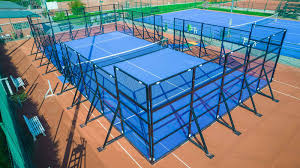

The Role of Paddle in Ping Pong Factories
In the world of manufacturing sports equipment, few items are as iconic and essential as the ping pong paddle. The paddle, also known as a table tennis racket, is a crucial component of the game, enabling players to strike the lightweight ball with precision and control. In ping pong factories, the design and production of paddles involve a complex interplay of materials, technology, and craftsmanship.
The journey of a ping pong paddle begins with the selection of materials. Typically, a paddle consists of a wooden blade and rubber coverings on both sides. The type of wood used is critical; it affects the paddle’s weight, flexibility, and overall performance. Common choices include balsa, willow, and ply, each offering different characteristics to suit various playing styles. Advanced manufacturers often blend materials to create composite blades that enhance durability and playability.
The Role of Paddle in Ping Pong Factories
After shaping, artisans carefully attach the rubber coverings to the blade. This is a meticulous process that requires skill to ensure an optimal bond between the rubber and wood. The thickness and type of rubber can dramatically influence the paddle’s performance; for instance, thicker rubber offers more spin, while thinner rubber provides better control.

In recent years, technology has revolutionized how ping pong paddles are manufactured. Advanced materials such as carbon fibers and synthetic rubbers have emerged, allowing for the production of paddles that are lighter yet more resilient. These innovations cater to the evolving demands of players, enabling them to enhance their skills and compete at higher levels. Factories are now adopting automated systems to streamline production, ensuring that every paddle meets high-quality standards efficiently.
Quality control is a critical aspect of paddle manufacturing. Each paddle undergoes rigorous testing to ensure it meets international standards set by the International Table Tennis Federation (ITTF). Factors such as weight, balance, and grip are meticulously evaluated. This commitment to excellence not only satisfies professional athletes but also instills confidence in amateur players.
Sustainability is becoming an integral concern in the manufacturing process. Many factories are striving to source wood from sustainable forests and are reducing waste through recycling initiatives. This shift resonates with environmentally conscious consumers, enhancing the overall appeal of the product.
In conclusion, ping pong paddle manufacturing is a fascinating blend of traditional craftsmanship and modern technology. From material selection to quality control, every step in the manufacturing process plays a vital role in creating a high-performing paddle. As the sport of table tennis continues to grow globally, the ping pong factories will undoubtedly innovate further, ensuring that every player, whether a novice or a professional, has access to the right tools to excel in their game.
High-Performance Industrial Flooring Solutions China Paddle Tennis Court for Sale
High-Performance Industrial Flooring Solutions Durable & Cost-Effective
Homogeneous Transparent Floor – Durable & Stylish Rubber Floor Solutions
Premium Homogeneous Transparent Floor for Durable & Stylish Spaces Rubber Floor Solutions
Premium Sports Floor Solutions Durable PVC Sports Floor & Rubber Floor for Gyms
Durable Rubber Composite Floor Premium Rubber Floor & Mats Solutions